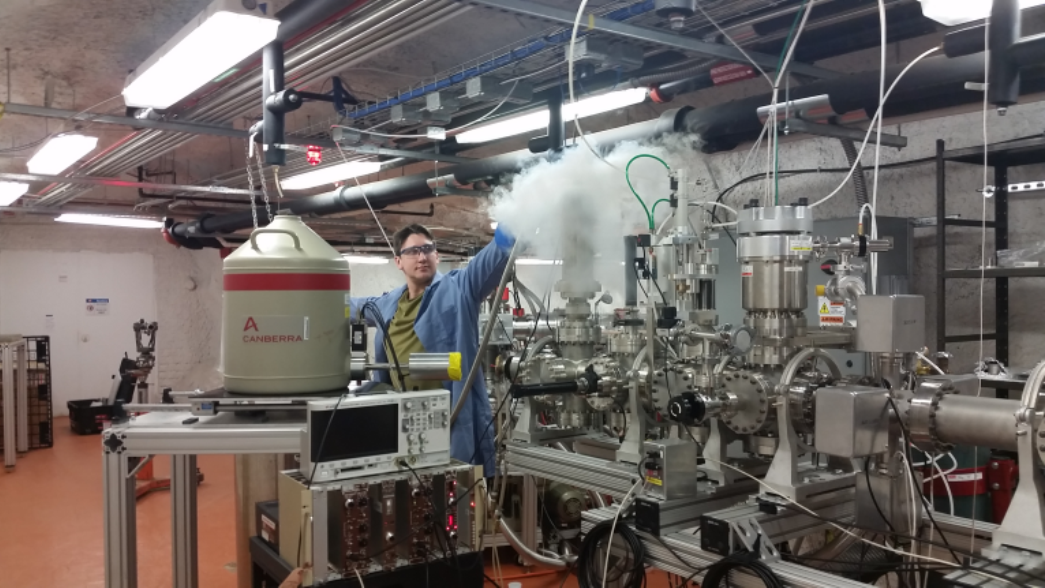Data
CASPAR secures funding to continue operations

The JINA-CEE Underground Nuclear Astrophysics Group has reached a milestone as a team of collaborators from the University of Notre Dame: Daniel Robertson, Manoel Couder, Anna Simon, Joachim Goerres and Michael Wiescher, received a 4-year award from the National Science Foundation (NSF) to continue measurements of nuclear reactions important for stellar nucleosynthesis processes at the Compact Accelerator System for Performing Astrophysical Research (CASPAR).

Located in the Black Hills of South Dakota, and housed within the Sanford Underground Research Facility (SURF) 4850 ft beneath the ground, CASPAR is the only deep underground accelerator laboratory in the United States. Going underground is crucial for the planed measurements as the cross sections of the reactions of interest drop dramatically at the energies relevant for stellar burning and thus the cosmic-ray induced background usually overwhelms the detection systems in laboratories above ground. CASPAR provides a low background environment thanks to its 4300 meter water equivalent shielding. The facility’s 1-MV accelerator delivers high-intensity beams required for measurements of the very low cross section reactions that drive the evolution of stars during their different burning stages, and determine their final fate.
Measurements funded within the $750,000 NSF award will focus on alpha-induced reactions important for the understanding of nucleosynthesis in the first stars. These reactions’ signatures are seen in spectroscopic observations of extreme carbon-enhanced metal-poor (CEMP) stars.These experiments are also crucial for the understanding of the s-process nucleosynthesis in Red Giant Branch (RGB) and Asymptotic Giant Branch (AGB) stars.

Adapted from original published by Janet Weikel at isnap.nd.edu
